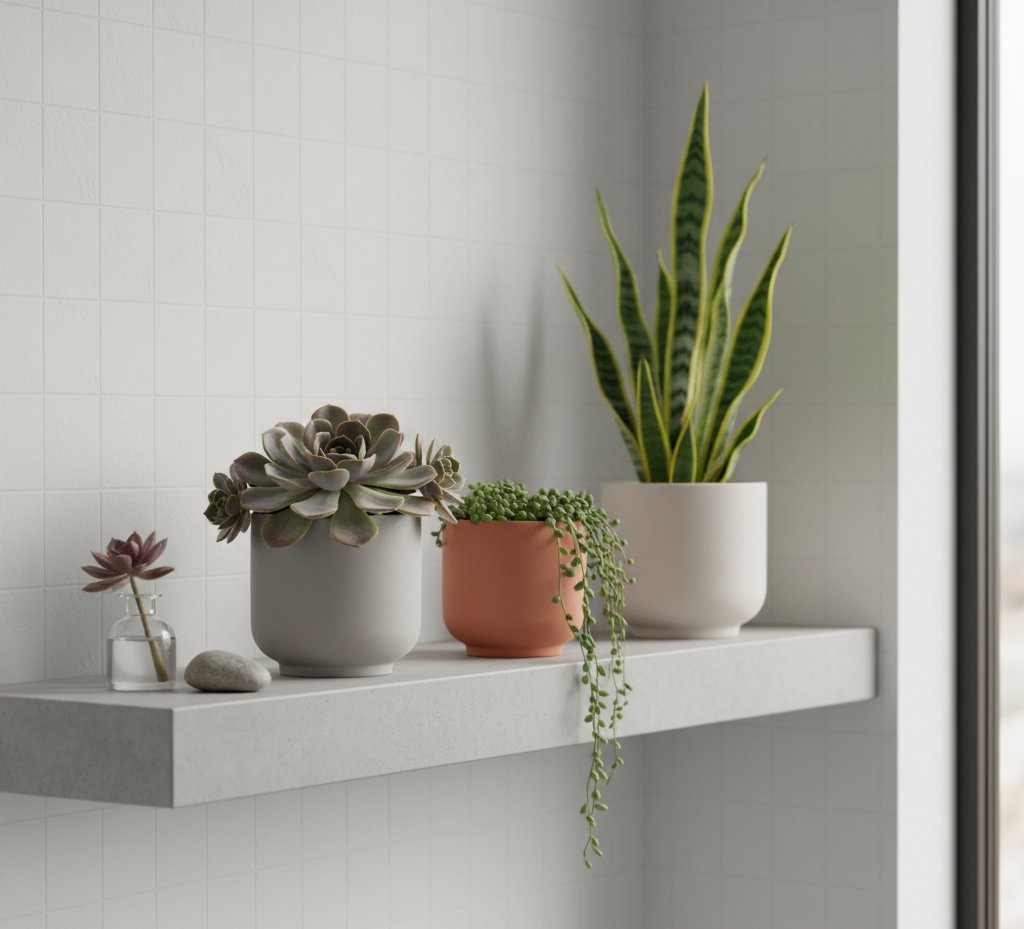Succulent Minimalism Principles
Succulent minimalism blends the calm of simple design with the natural beauty of resilient plants. It’s about creating balance, using fewer elements to make a stronger visual and emotional impact. You achieve harmony by pairing clean lines, open space, and carefully chosen succulents that thrive with little effort.
You don’t need a large collection to make a statement. A few well-placed succulents can define a room’s mood and highlight your appreciation for calm, uncluttered living. Each plant adds texture and form without overwhelming your space.
This approach focuses on intention, not abundance. By understanding the core principles of succulent minimalism, you can design spaces that feel fresh, organized, and enduring, where every plant serves a purpose and every detail supports simplicity.
Core Principles of Succulent Minimalism
Succulent minimalism focuses on reducing visual clutter, using plants with purpose, and allowing open space to create calm and balance. You build harmony through thoughtful placement, careful plant choice, and a focus on form rather than abundance.
Simplicity in Arrangement
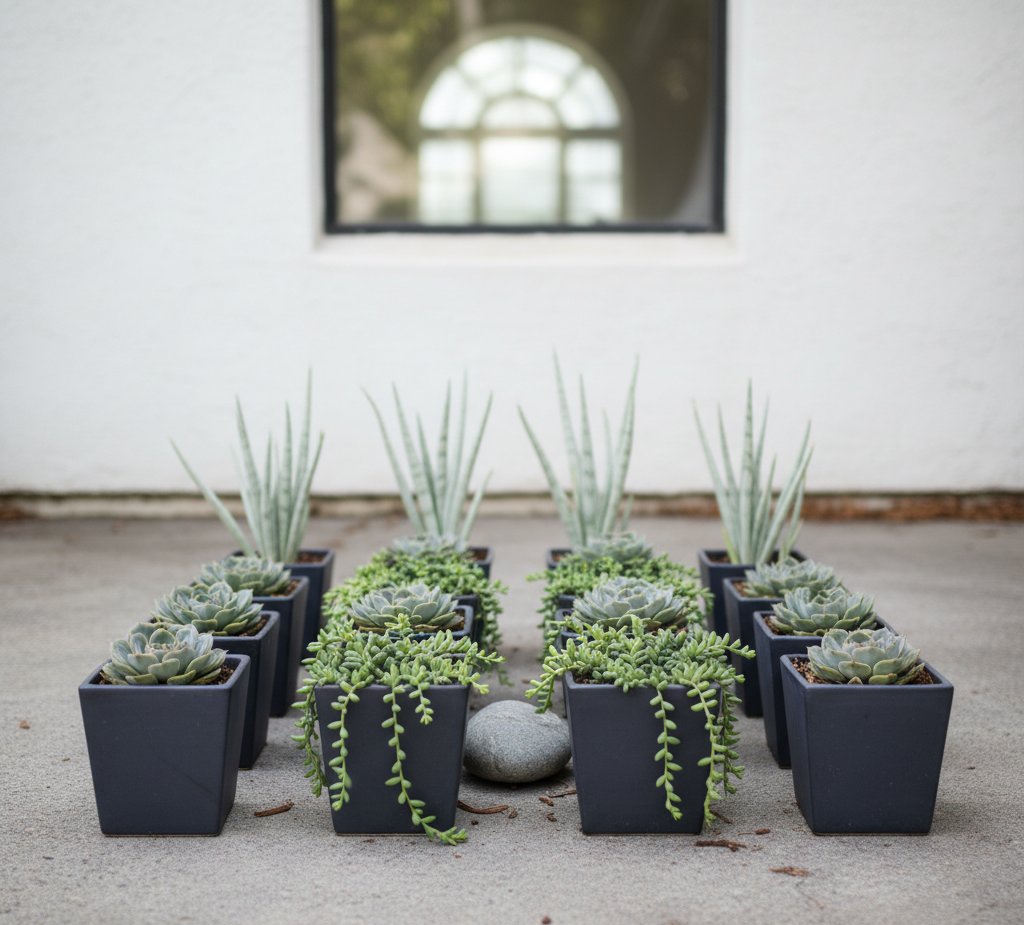
Keep your layout clean and organized. Use few plants instead of many to highlight shape and texture. Succulents like Echeveria or Sedum have distinct forms that stand out when not crowded.
Arrange plants in geometric patterns or straight lines to maintain structure. A simple layout helps the eye rest and lets each plant become a visual anchor.
| Tip | Purpose |
|---|---|
| Limit color variety | Keeps focus on shape and texture |
| Use uniform pots | Creates visual consistency |
| Leave spacing between plants | Improves balance and airflow |
Avoid mixing too many decorative items. A single neutral container or stone accent often complements the plants more effectively than multiple accessories.
Intentional Plant Selection
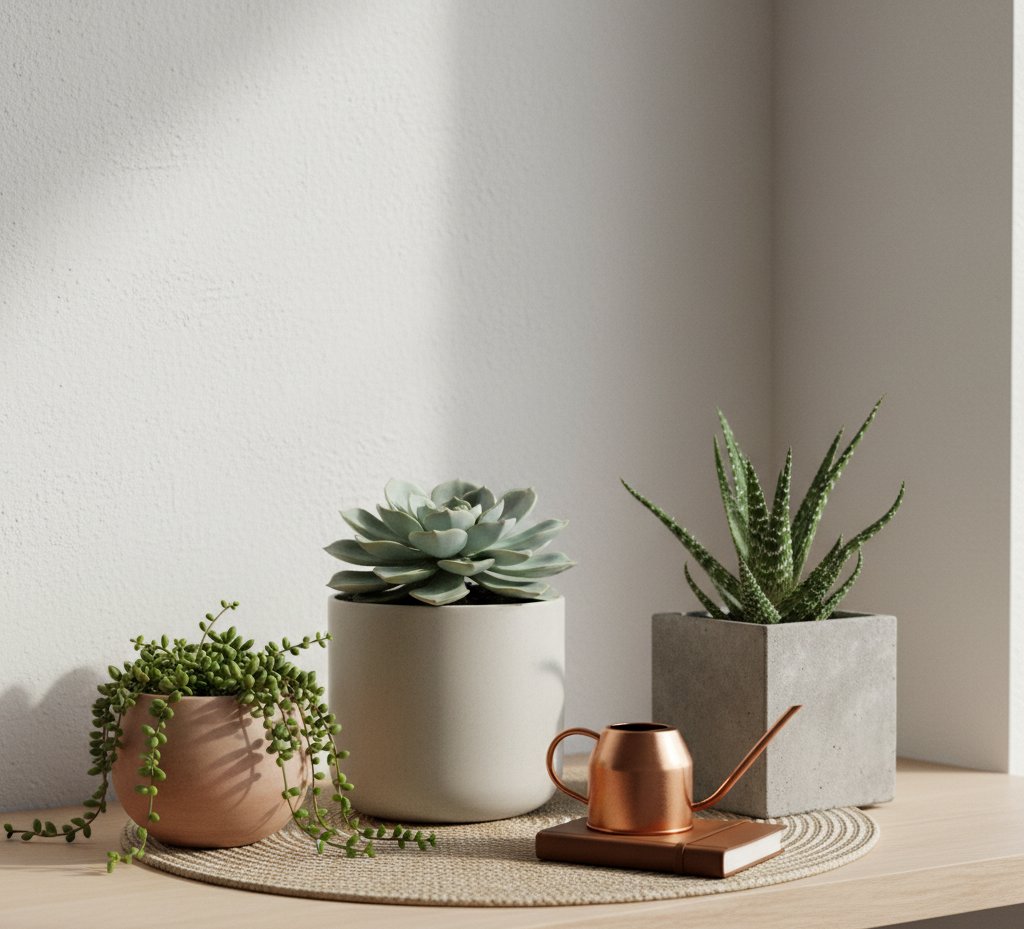
Choose plants that serve both visual and functional roles. Succulents such as Echeveria, Sedum, and Aloe thrive with minimal care and adapt well to small spaces. Their ability to store water supports a low-maintenance lifestyle that aligns with minimalist values.
Select species based on growth rate, light needs, and color tone. Matching these factors ensures your arrangement stays balanced over time.
You might group plants with similar watering schedules to simplify care. For example:
- Echeveria: prefers bright light and dry soil
- Sedum: tolerates partial shade and infrequent watering
Choosing fewer, hardy species helps you maintain a consistent and uncluttered design.
Emphasis on Negative Space
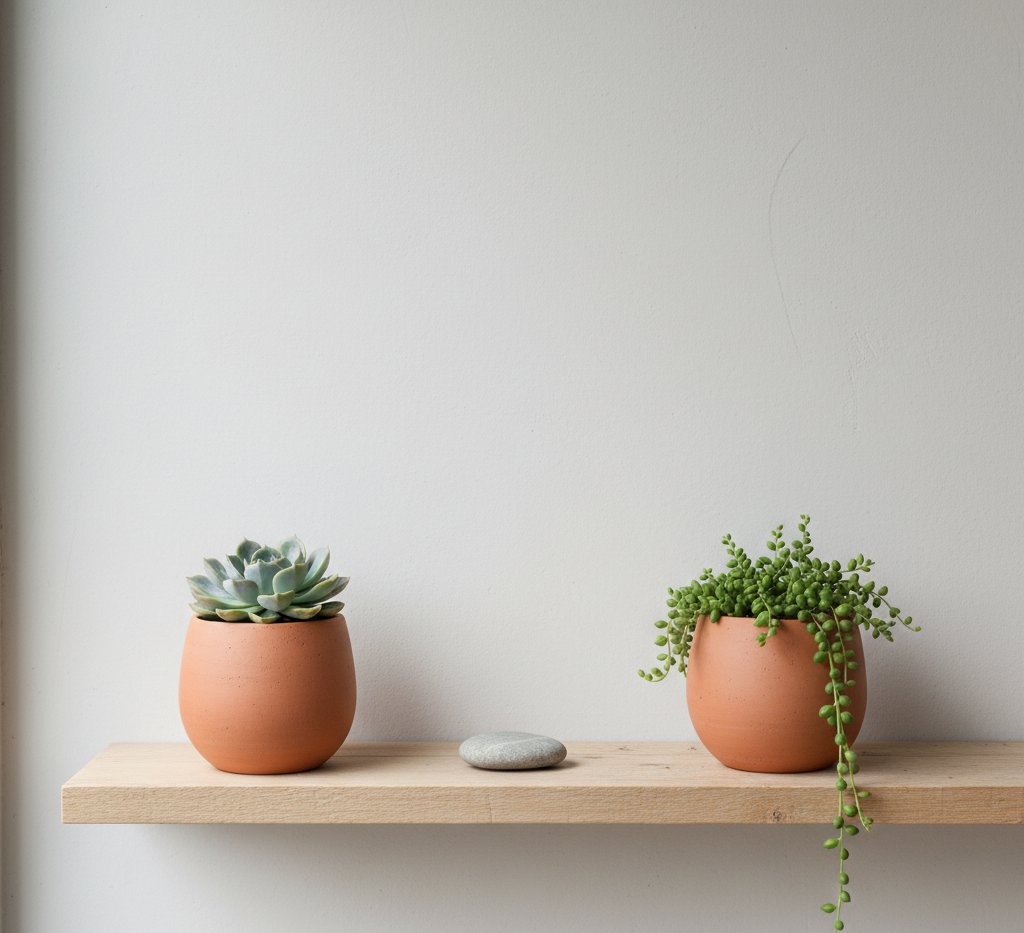
Negative space, the open area between objects, matters as much as the plants themselves. It defines boundaries and prevents overcrowding. You create calm by letting each plant breathe within its own space.
Use white space on shelves or tables to highlight the plants’ natural forms. Empty areas draw attention to texture and color contrast without distraction.
A minimalist succulent display often includes:
- One or two plants per container
- Neutral backgrounds like wood or stone
- Wide spacing between pots
This approach keeps focus on essential elements and supports a balanced, peaceful atmosphere.
Designing Minimalist Succulent Spaces
You can create a calm and modern space by focusing on simple plant choices, clean-lined containers, and a balanced mix of colors and textures. Each element should serve a purpose and work together to highlight the natural beauty of succulents without visual clutter.
Choosing the Right Succulent Varieties
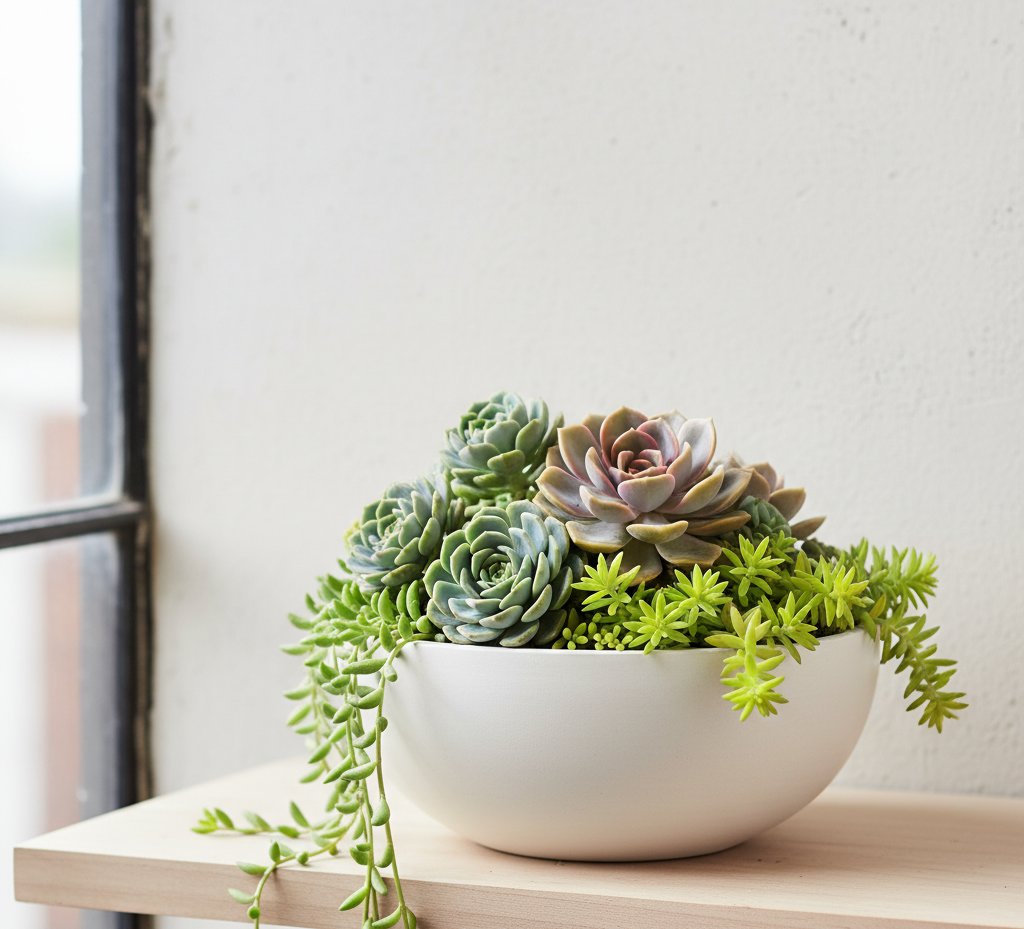
Select succulents that share similar care needs to keep maintenance simple. Echeveria and Sedum varieties work well because they thrive in bright light and require little water. Their compact growth and geometric shapes fit neatly into minimalist designs.
Use a limited number of species to maintain visual harmony. Two or three types are often enough for a small arrangement. This approach prevents the space from feeling crowded and helps each plant stand out.
| Variety | Growth Habit | Best Use |
|---|---|---|
| Echeveria | Rosette form | Centerpiece or focal point |
| Sedum | Trailing or mounding | Edge or filler plant |
Keep spacing consistent and avoid mixing plants with very different sizes or leaf structures. Consistency supports a clean and balanced look.
Selecting Minimalist Containers
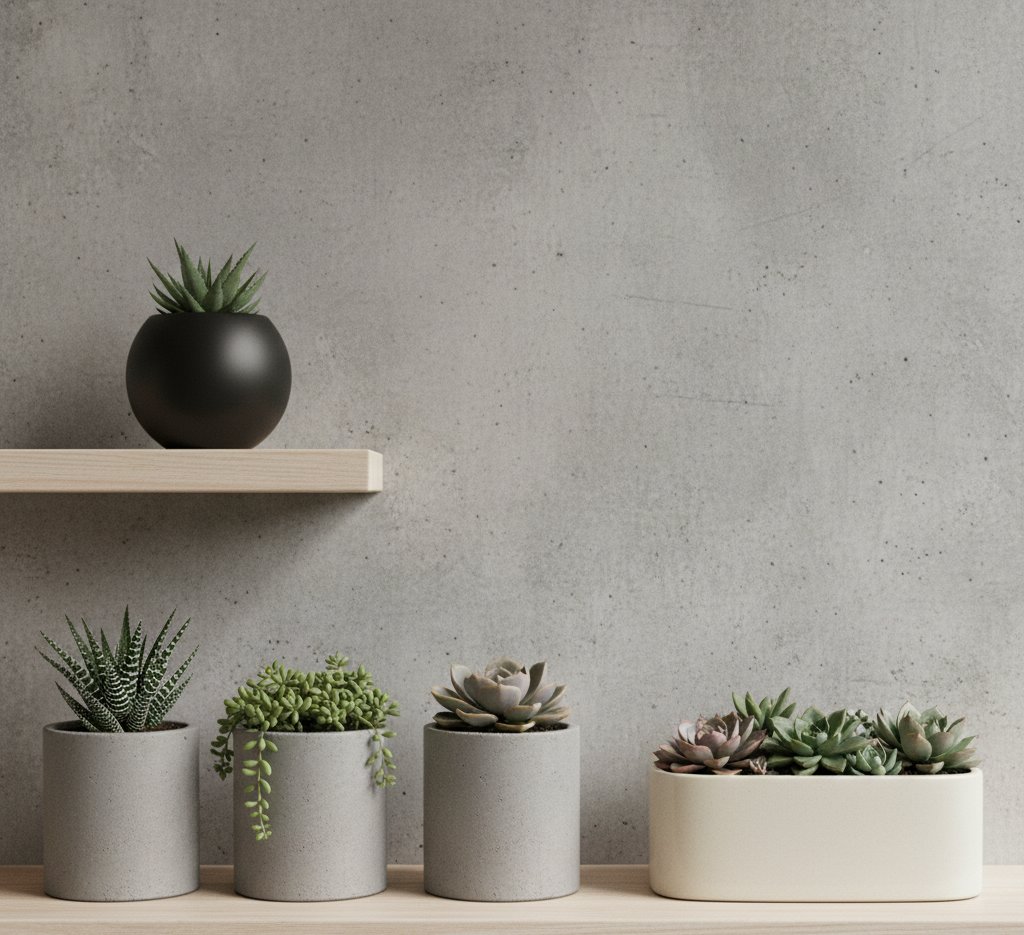
Choose containers with simple shapes and neutral colors such as white, gray, or matte black. These tones draw attention to the plants rather than the pots. Materials like concrete, ceramic, or metal add texture without distraction.
Avoid ornate designs or bright patterns. A rectangular or round pot with smooth surfaces complements the structured forms of succulents.
When arranging multiple containers, keep proportions consistent. For example, use three small pots of equal height on a shelf or one large container as a focal point. This repetition strengthens the minimalist aesthetic and helps maintain order in the space.
Balancing Color and Texture
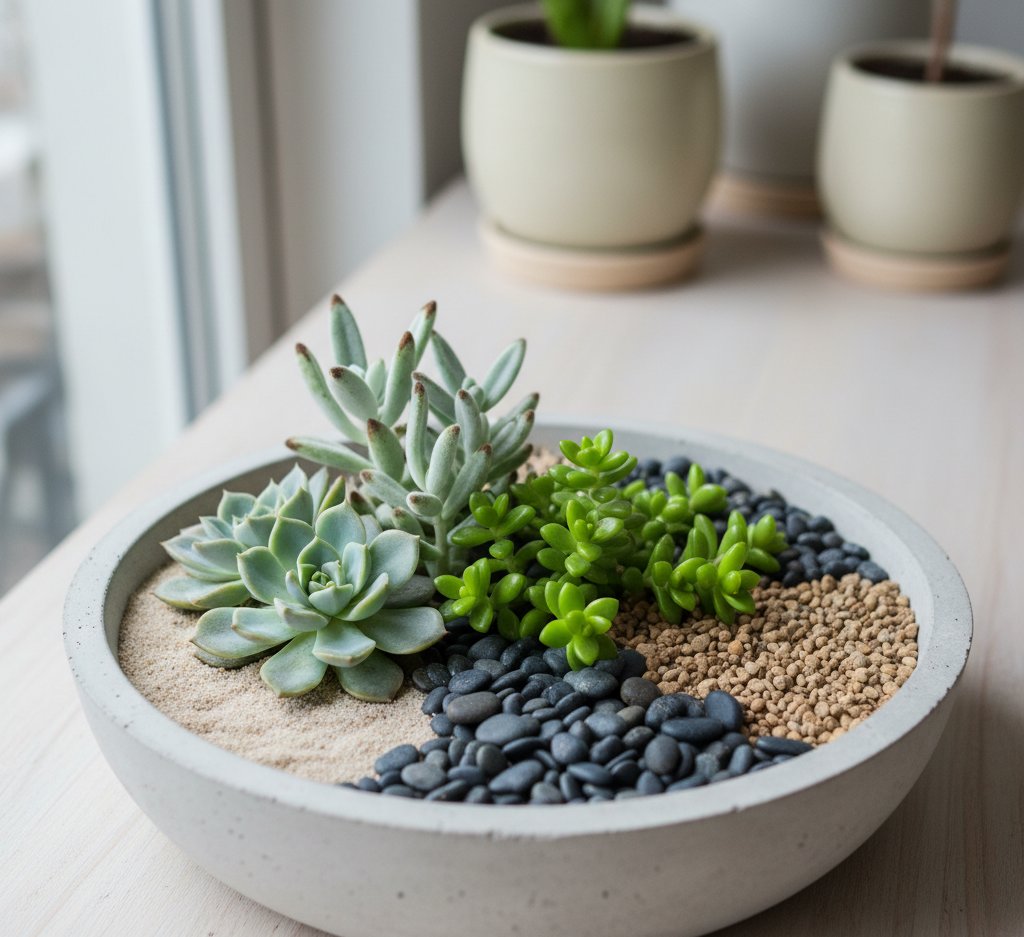
Minimalist design benefits from restraint, but variety in leaf color and surface texture keeps the arrangement interesting. Pair matte green Echeveria with glossy Sedum or fuzzy Kalanchoe tomentosa for subtle contrast.
Stick to a narrow color palette, greens, soft blues, and muted purples work well. Avoid mixing too many bright tones, which can break the calm feel.
Use small stones, sand, or gravel as top dressing to define plant boundaries and add a clean finish. The goal is to highlight natural form and texture while keeping the overall look simple and balanced.

